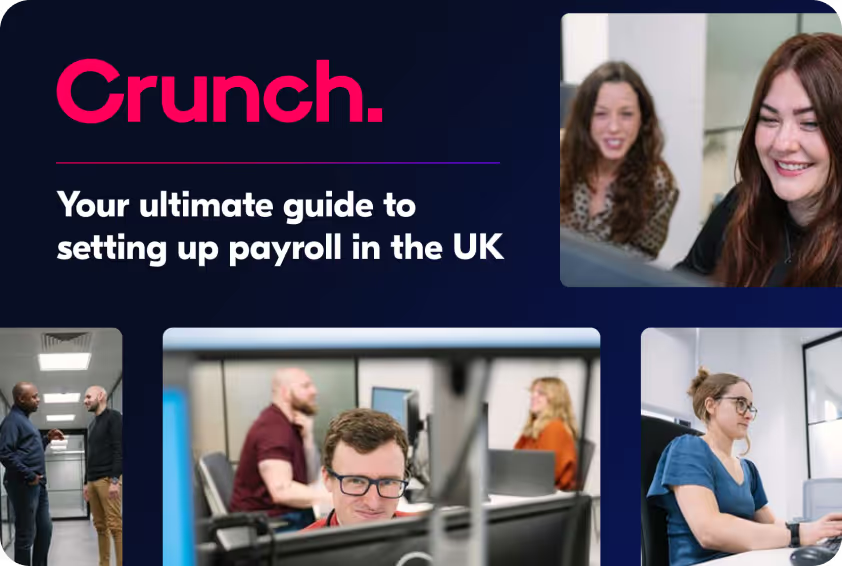Being self-employed means stepping up to manage your own taxes, and having a handle on your Unique Taxpayer Reference (UTR) is a big part of that. This guide breaks down how the self-employed tax system works, how to use your UTR, and how to stay on top of your responsibilities under Self Assessment.
While employees have their tax managed through a tax code and PAYE, things work a little differently when you are your own boss. Instead of a tax code telling an employer what to deduct, you use your UTR to handle your taxes directly with HMRC. We will look at what your new responsibilities are and how to make sure you are meeting all your tax obligations.
What is a tax code?
Tax codes are like a special code created by the government, which lets employers know how much tax to take out of people’s earnings. Tax codes will appear on employees’ payslips each month, and are made up of both letters and numbers. The numbers tell you how much money an employee can earn before they pay any tax, and the letters give a little more context about their tax situation.
Let's break down a common tax code, like 1257L:
- 1257: Someone with this number in their tax code can earn £12,570 (the current Personal Allowance rate for 2023-24) before they start being taxed on their earnings.
- L: This letter means the ‘normal’ tax bracket rules apply to that person, and they’ll get the standard tax-free amount for the year.
Other letters might show up in tax codes too, like ‘M’, ‘N’, ‘T’ and ‘K’, which let HMRC and a person’s employer know more details about their situation, such as whether they receive certain benefits, a pension or Marriage Allowance.
{{tax-guide}}
Do tax codes apply to the self-employed?
As a fully self-employed person, your approach to taxes differs from that of an employed individual. While employed individuals have tax deductions taken directly from their paychecks, self-employed individuals manage their taxes through a process called Self Assessment.
This means you're responsible for calculating and paying your taxes directly to HMRC based on your earnings, allowable expenses and other financial factors.
Rather than a tax code, you’ll have a unique taxpayer reference (UTR), which will be given to you by HMRC when you sign up for Self Assessment.
Keep in mind that if you have money coming in from other sources besides self-employment, like a job or a pension, you will have tax codes for them as well as your personal UTR.
What is a UTR (or unique taxpayer reference)?
A UTR, or unique taxpayer reference, is a ten-digit number that HMRC assigns to you when you register for Self Assessment. It’s a bit like your personal tax ID, or the ‘self-employed version’ of a tax code.
You'll use your UTR whenever you interact with HMRC regarding your self-employment, such as filing your Self Assessment tax return or managing your tax payments.
Where can I find my UTR?
You can get hold of your UTR in a few different places:
- In letters or emails from HMRC: HMRC will often get in touch to remind you about your Self Assessment deadlines, and will include your UTR in their letters and emails.
- Via your online account: If you've registered for Self Assessment online, you can find your UTR in your online account.
- On your previous tax returns: Your UTR can also be found on your previous Self Assessment tax returns.
Will my UTR number ever change?
After a personal or business UTR number has been issued to you, it can’t be changed. It’s unique to everyone to allow HMRC to identify you or your company for tracking tax bills and any payments that you’re responsible for.
If you were to de-register from being self-employed, go back to your old employer, and then become self-employed again, you’d be issued with the exact same UTR as you had when you were first self-employed. It really is unique to you for life!
How do I fulfil my tax responsibilities as a self-employed person without a tax code?
As a self-employed individual, you’ll need to manage your taxes through HMRC’s Self Assessment system. At the most basic level, here’s how to do that:
- Register for Self Assessment: You’ll get your UTR by post 10 days after you register, but you can usually see it sooner in your Personal Tax Account or the HMRC app.
- Recordkeeping: Keep detailed records of your income, expenses and invoices throughout the year. This will help you accurately calculate your tax liability when tax season rolls around.
- Complete your Self Assessment tax returns: Each tax year, you’ll need to complete a Self Assessment tax return, reporting your earnings and expenses. You’ll need to know your UTR to fill this tax return out. If it's the first Self Assessment you're completing, we recommend you checking out our guide on completing your tax return for the first time.
- File your Self Assessment tax returns on time: Make sure to submit your Self Assessment tax return by the deadline to avoid penalties.
- Pay your taxes: Based on the information you provide, HMRC will calculate the tax you owe. Then it’s up to you to pay your taxes on time and in full!
Keep in mind that the above is a super simplified version of how to pay your Self Assessment tax. We recommend speaking to a professional tax adviser or online accountant to get advice on how to calculate, pay and stay on top of your taxes as a self-employed individual.
Whether you're a first-time filer or a Self Assessment superstar, we'd recommend you subscribing to our upcoming tax dates calendar, it's designed to help self employed professionals like you stay on top of all the deadlines.
{{pt-self-assessment}}
Cracking the tax code as a self-employed individual
While tax codes themselves are designed for employed individuals, understanding your self-employed tax situation is equally as important.
As a self-employed person, HMRC will give you a UTR instead of - or as well as - a tax code, and this number is key to fulfilling all of your tax responsibilities.
By staying informed about your UTR, managing your Self Assessment and meeting tax deadlines, you’ll stay on the right side of HMRC. Just remember you can (and should) reach out to a professional tax adviser to discuss what your tax obligations are. They’ll be happy to help you tick all of the boxes, so you can focus on what really matters - growing your business.


.svg)

.svg)



.webp)















